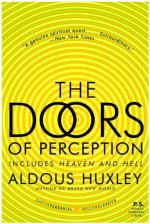
|
| Name: _________________________ | Period: ___________________ |
This quiz consists of 5 multiple choice and 5 short answer questions through Book 2: Appendix 7.
Multiple Choice Questions
1. Where was Gericault when he saw the horse that inspired him to paint "Officiers de Chasseurs"?
(a) A pasture in the countryside.
(b) The road to Saint-Cloud.
(c) The streets of London.
(d) In a forest in Leeds.
2. What is the subject of most of La Tour's paintings?
(a) Still-life images of fruit and flowers.
(b) An object seen by the light of a single candle.
(c) Women performing daily tasks.
(d) Landscapes and nature.
3. What happened to "pyrotechny" after the fall of Rome?
(a) Bigger and brighter displays were invented.
(b) It returned to being used exclusively for military purposes.
(c) The technology was lost, and development had to begin from scratch.
(d) It became used only in religious and national ceremonies.
4. The "new Art of Versailles" was deliberately cultivated, according to the author, during the reign of which king?
(a) Louis XIV.
(b) Edward VI.
(c) Henry VIII.
(d) Phillip II.
5. Which is NOT one of the "visionary arts" that the author mentions at the beginning of Appendix 3?
(a) Pageantry.
(b) Fireworks.
(c) Theatrical spectacle.
(d) Religious ritual.
Short Answer Questions
1. According to the author, in Appendix 2 what was the result of our ancestors' winter diets?
2. According to the author, what happens when Nature is seen up-close or from a different angle?
3. In what year does the experiment take place?
4. What event was, according to the author, an example of ancient pageantry which was enriched and improved by technological advances?
5. What affects one's ability to have visionary experiences, according to the author, if one is using the first method mentioned in Appendix 1?
|
This section contains 374 words (approx. 2 pages at 300 words per page) |

|




